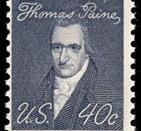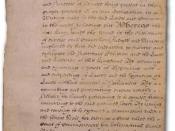The English Bill of Rights, the Cahier of the Third Estate of the City of Paris and Common Sense were all written during a time of revolution in their respective countries. Although all three political writings originated in a different country, they each share several important similarities. Each document also addressed specific issues, which the others did not. The English Bill of Rights, the Cahier of the Third Estate of the City of Paris and Common Sense all served as a bridge between their countries' different forms of political structure.
The English Bill of Rights came after the reign of the first two Stuart kings, James I (1603-1625) and his son Charles I (1625-1649). Both kings ran into problems with the House of Commons over religious, economic and other political issues. The birth of James's II son led to the Glorious Revolution of 1688-1689. The revolution resulted in Mary II and her husband, William of Orange of Holland taking the Crown and signing the English Bill of Rights.
The English Bill of Rights was signed by Parliament in 1689. The English Bill of Rights placed parliamentary limitations on the authority of the crown, which is still a central part of England's political system.
The Cahier of the Third Estate of the City of Paris resulted after Louis XVI of France could not balance the national budget. In an attempt to correct the budget problem, Louis called the Estates General, France's representative assembly, to convene in the hopes it would establish new taxes that would balance the nation's budget. The convening of the Estates General had a much larger effect on France than Louis had expected. At the assembly, the forty thousand attendants wrote cahier de doleances, which listed local and national issues that needed to be addressed. The cahier of...


